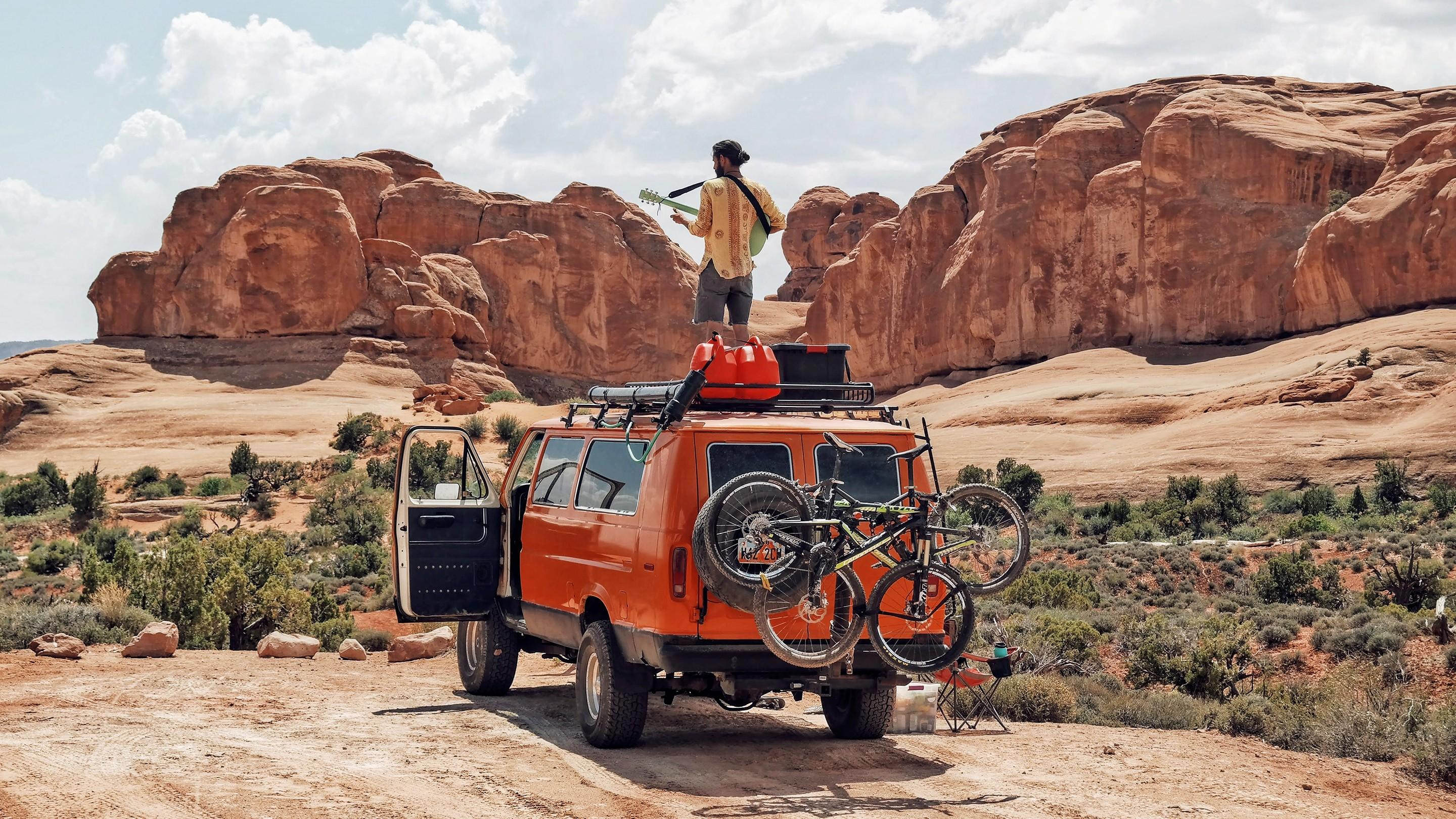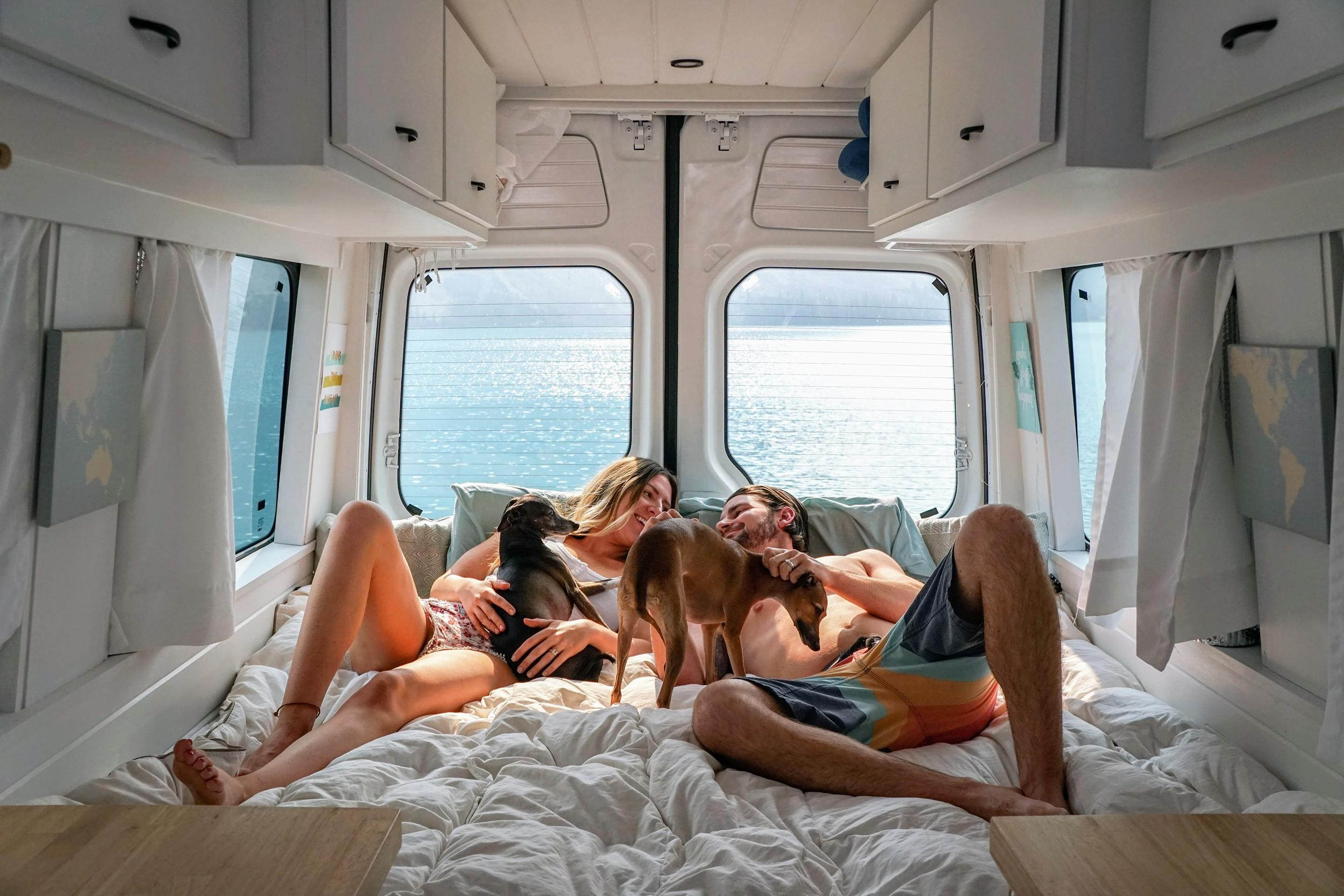
Heartbreak in 100 Square Feet: Why Living in a Van Is Now Aspirational
As my boyfriend angrily slammed the passenger door to our campervan, I had two thoughts: “Did we just break up?” and “If that just broke the door, he’s paying for my security deposit.” It was Saturday night, and my boyfriend and I were in the middle of an extended road trip in California's Yosemite National Park. We’d been hiking by day and sharing roughly 100 square feet of space at night. We were on a mission to get a taste of the alluring #vanlife movement so unavoidable on Instagram, itself an offshoot of the tiny house movement.
Our repurposed Mercedes Sprinter van was our temporary home, but unlike bona fide “vanlifers,” ours was a rental, offering us a taste of the movement without the need to make all our possessions permanently fit in a duffel bag. On our outing, I was looking forward to capturing my own envy-provoking, “aren’t-we-the-epitome-of-wanderlust” Instagram fodder. But as I sat crying on the upholstered van seats, seat belt buckle jamming into my side and canvas curtains falling off the windows, I felt anything but glamorous.
That low point inspired a question: How do couples deal with conflict in a home too small to even stand up in? Surely the Instagram lifestyle can’t be as flawlessly romantic as popular accounts like @project.vanlife and @vanlifediaries (slogan: ‘love in motion’) would suggest. To dig deeper into the movement, I connected with a relationship therapist and three vanlife couples to get the real story on love and relationships in a hashtagged world.


From speaking with vanlife couples, I learned that a shared sense of adventure seems to be what keeps them going through the peaks and valleys, figuratively and literally. For Sara and Alex James, the faces behind the @40hoursoffreedom Instagram account and corresponding blog, their inability to find time for travel is what awakened them to the idea of a vanlife lifestyle, even though it meant breaking the lease on their home. “We have always enjoyed spending time together and have probably spent more time together pre-vanlife than most couples,” says Alex. So for them, the perpetual closeness of their 100-square-foot home was a justifiable trade for the vagabond lifestyle it affords them.
As far as fights, Alex and Sara’s exploration into the vanlife movement provided the biggest test of their relationship. Like many vanlifers, they converted their own van from scratch, swapping paneling and bench seats for shelves and a sink. The stresses of construction delays, choosing materials, and coming in exceedingly over budget created the most significant challenge to their on-the-road lifestyle. Alex says that taught them the importance of thorough communication from the very beginning. “You have to be able to talk and communicate with each other in order to get anything done—to get in a drawer to get something out, you always need to communicate with the other person to get by them in such a small space.”
As followers of the vanlife social movement know, it’s inextricably linked to Instagram’s culture of cultivating likes and comments. Many vanlife couples make money off of sponsorship deals, and those opportunities require tens of thousands of followers. But Negendank cautions that the constant need to deliver a certain image could be isolating and lead to communication breakdown, especially if the couple needs to smile and cover up unhappiness in order to portray a certain lifestyle. Feeling a need to act a certain way—and possibly facing a financial loss if that doesn’t materialize—can make both partners question the legitimacy of emotions. Some vanlifers are so aware of this risk that they minimize their involvement with sponsorships in general, like the Jameses. To them, the importance of staying authentic and maintaining their integrity outweighs the small income from product sponsorships—though they do offer digital coaching on how to escape the office lifestyle.
Not everyone who lives in a van is naked and sexy all the time or thoughtfully reading a book of poetry as they gaze out at the sea.
When you share [a space you can’t even stand upright in]…you have no choice but to confront things immediately,” says Brianna Madia. She’s a full-time vanlifer with nearly 150,000 Instagram followers. Brianna and her husband Keith live in Utah in a converted 1990 Ford cargo van with about 70 square feet of livable inside space. She says that the confines of their home force them to handle conflicts right away, rather than being able to slam a door or sleep in a guest room like typical cohabiting couples. She believes that their van, affectionately called Bertha, has helped them learn to intimately read each other and know immediately when one of them is upset or distressed. Brianna and Keith see their lifestyle as being akin to the way humans have lived throughout most of history, sharing small caves and huts in less than luxurious conditions. “It can certainly be off-putting not knowing when your next shower is,or when your last shower was, but there’s also something pretty primal about it,” says Brianna.
However, that doesn’t mean blowups never happen. Brianna recalls one fight after their van broke down on the way to a contract job. When Keith didn’t understand her frustration, she started walking down the highway in Montana, alone and angry. After making it less than 1,000 feet, she sat down and cried on the grass, leaving Keith to deal with the broken down van and tow truck. “We've gotten good at accepting each other's silences,” says Brianna, “at allowing each other to huff and puff and stew and sit there with arms crossed.” Though it didn’t cause a breakup, it was a huge lesson on how to handle conflict for the now-married couple.
Commitment to the vanlife can be another ongoing issue for couples, especially when the van houses not just a young couple, but a young family. For Ashley and Lamar ‘Mars’ Fite, their biggest fights have revolved around fear of going without stability and security, especially when it comes to their young daughter. It’s easy to understand how the conversation around “what’s next” could be unusually stressful for these couples. “Vanlife puts your relationship through boot camp,” says Ashley. “If you don't communicate well or handle conflict well, it will quickly show you the cracks in your relationship.”


But for other vanlifers, finding the time and desire for regular intimacy can be challenged by the confines of the van, as with the Fite family. Despite the fact that the van is an upgrade in terms of space—they spent three months prior living and traveling out of a Honda Civic—the constant togetherness can be a challenge. They added a lofted bed for their daughter with curtains to separate the space in order to create occasional privacy. “We are super physical people and both need that more than other types of affection, so we wanted to make a point to give us our own space,” says Mars. “We also try not to become so comfortable that we forget to make the small moments special.”
Brianna Madia agrees. She cautions that the challenges of vanlife aren’t shown on social media and can give viewers an unrealistic expectation of the lifestyle. Though her Instagram channel includes plenty of laughing, free-spirited shots (as well as the occasional sponsored post), she tries to portray in her captions a more authentic feel. “Not everyone who lives in a van is naked and sexy all the time or thoughtfully reading a book of poetry as they gaze out at the sea,” says Madia. And in terms of just how sexy the ‘damn the man’ bohemian lifestyle is, Madia suggests that climbing over your partner to pee into a plastic bottle in the middle of the night isn’t exactly the epitome of a turn on.
However, most accounts aren’t concerned with showing the “real” side of #vanlife. They’re often designed to be aspirational, as is the goal with Alex and Sara’s channel. They’re less concerned with setting a realistic expectation and more concerned with inspiring viewers to consider alternatives to a 40-hour work week life. For the Fites, their takeaway is somewhere in the middle—they’re selling freedom and the beauty of simplicity, but they also caution that “if you jump into vanlife thinking it’s going to solve your problems, it will likely shine light on them even more.”
Rather than the vanlife experience shaping strong couples, strong couples shaped the vanlife movement.
As for our evening in Yosemite, turns out both the door and our relationship remained intact. Like the true vanlifers I spoke with, we were forced to deal with the issue immediately. Though my boyfriend did briefly attempt to fume under the stars before the below-freezing temperatures drove him back to the warm shelter of the van. Whether our desire to be together drove us to pile into the van, or the van drove us to be together, I can’t say. Maybe it’s both, or maybe our fight was worsened because of our confined space. Either way, the fight happened, and I didn’t come away from the adventure with the modern bohemian photos I wanted. I guess we’ll need to rent another van.






